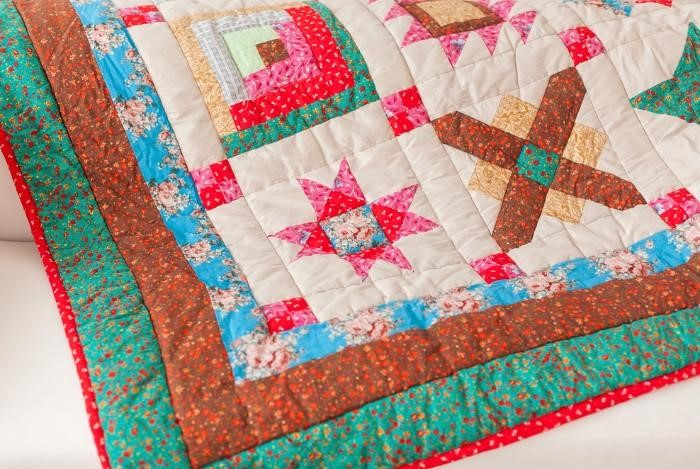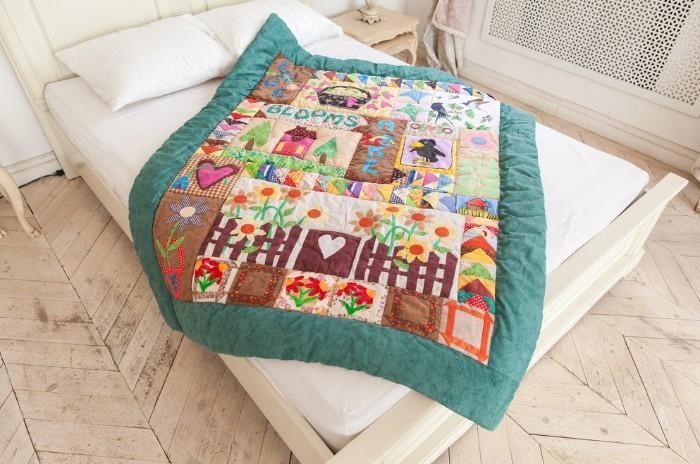
Subscribe To Emails
Subscribe to the YourCotton mailing list to receive updates on new arrivals and promotions (about once every 6 weeks)!

When it comes to quilting, there are a million ways to create a unique design. One of the most popular methods is by using embroidery designs. This involves stitching designs onto your fabric using a particular machine or needlework program. This blog post will show you how to create your own unique embroidery quilting designs for your next project!
Quilting embroidery is a craft that often combines quilting and embroidery techniques to create intricate, colorful art pieces. Traditional quilting gives texture and character to handcrafted items, while modern embroidery adds stylish details. Combining these two crafts results in beautiful items that can add originality and elegance to any room or living space. Quilting embroidery is often used to make items such as bedspreads, cushion covers, wall hangings, picture frames, bags, and purses — all of which brighten up any area. No two quilted pieces are ever the same due to the uniqueness of every individual's artistic touch, making this craft an enjoyable hobby for people of all ages.
The easiest quilting design would depend on the person's skill level and what kind of quilt they are making. A patchwork quilt or log cabin block pattern might be best for you if you're starting out since it’s relatively straightforward and requires fewer pieces than other designs. Strip piecing is also a great beginner option since it doesn’t require intricate cutting. If you have some experience with quilting, traditional patterns like Dresden plate, nine-patch, or star blocks can also be fun to create.
Once you become more confident in your skills, more complex designs such as tumbling blocks, medallion quilts, or paper-pieced patterns may be worth trying. Ultimately, the best quilting design for you depends on your skill level and the type of quilt you’re making.
Whatever you choose, have fun with it! Quilting can be a great way to express your creativity while creating something beautiful that will last for generations.
Once you have chosen the machine embroidery designs you want to use for your quilting project, it’s time to start! You must read all of the instructions before beginning any project. Here are some tips on how to quilt with machine embroidery designs:
1. Set up your sewing machine and make sure it is properly threaded and oiled. Make sure the needle size and type match what is recommended for the fabric you’re using.
2. Select a stabilizer or backing material behind your fabric so the stitching stays in place as you go around corners or curves.
3. Place the fabric between two layers of stabilizer and pin them together if needed.
4. Load the machine embroidery design of your choice into the machine and select its settings.
5. Position the fabric underneath the machine's needle, ensuring it’s centered so the design will look even when you’re finished.
6. Begin stitching out the quilt designs, keeping an eye on how it looks as you go along. Make any necessary adjustments if needed.
7. Once the machine embroidery design is complete, carefully remove the quilted fabric from under the needle and cut away any excess stabilizer or backing material, leaving a clean edge all around your quilt blocks or project piece.
8. Finish your quilting project by binding it, adding batting and backing fabric, or any other finishing touches you prefer.
Quilting with embroidery machine designs is a great way to add unique detail and texture to projects. With a bit of practice and some patience, you can create beautiful quilts that will be treasured for years to come!
Choosing the right design for your project can be a daunting task. The first step is to define the purpose of the project. Knowing the desired outcome will help you decide on the type of design that best suits your needs.

Once you have defined what you want to achieve, consider who the users of your project will be and how they will interact with it. This will help you select elements that meet their requirements and are appropriate for their audience. Consider also how the design should look aesthetically and if any existing design aesthetics should be used or avoided.
Another important factor when choosing a design for your project is functionality and usability. Consider what features must be included and if any special features are required. Consider the user experience when selecting a design and ensure the layout is easy to navigate and understand.
When it comes to embroidery quilting, you’ll want to choose suitable fabrics and threads for the job. Cotton is one of the most popular fabrics used in embroidery quilting due to its durability and breathability. It also absorbs dye quickly, making it an excellent fabric for vibrant designs. Linen or muslin are also popular because they’re lightweight, hold their shape well, and have a beautiful texture. Silk is another luxurious option that adds an elegant touch to any project.
Threads come in two main categories: natural fibers like cotton, linen, wool, and silk, and synthetics like rayon, polyester, and acrylic blends. Natural fibers offer superior strength but tend to fray quickly. Synthetics, however, provide excellent colorfastness and durability, but usually lack natural fibers' soft, luxurious feel. For most projects, a combination of both is recommended.
When buying thread for embroidery quilting, look for a high-quality thread that won’t break easily or fade over time. Colorfast threads are also important to ensure long-lasting vibrancy in your designs. Choose neutral colors like white or ivory if you want something subtle and sophisticated, while brighter shades can add fun to any project.
Creating unique embroidery quilting designs is an enjoyable way to express yourself and make something beautiful. Following the tips in this blog post, you can create stunning pieces that will be treasured for years. Choose suitable fabrics and threads and practice your skills with simple patterns before taking on more complex designs. To get started, browse our fabric collection!